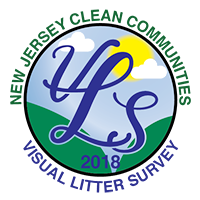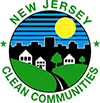Announcement
NJ State League of Municipalities Conference
November 13, 2018, 2:00p.m., Room 401, Atlantic City Convention Center
The Visual Litter Survey in New Jersey: Changing State and Local Policies
New Jersey’s Visual Litter Survey (VLS) report released in 2018 concluded that the largest volume of debris on streets and roadways in New Jersey is from vehicles and construction, equaling 18.2 percent of the total litter spotted. Littered paper was second at 14.8 percent, followed by beverage containers at 14.1 percent. Cups, lids and straws were 10.3 percent, followed by candy and snack packaging at 7.3 percent. This session will discuss how data from reliable sources can help affect state and local policies, industries that produce these materials and the economy.
Join us to hear our panel of experts:
Steven Stein, Environmental Resources Planning
Kevin Dietly, Northbridge Environmental Management Consultants
(American Beverage Association)
Councilman Samip Joshi, Edison Twp.
Councilman Tim Kriebel, Ventor City
Phil Rozenski, American Progressive Bag Alliance
.
Earn 2 CCCC Credits!
Registration Instructions
Email the NJ Clean Communities Council at This email address is being protected from spambots. You need JavaScript enabled to view it. if you plan to attend, would like to earn credits, and/or expect to receive a CCCC certificate. Please use NJLM-VLS in the subject line of your email.
You must register for the NJLM conference to attend this session. For more information on registration or to register online visit https://www.njslom.org/300/Conference .
Conference pre-registration ends on October 1. After this date, attendees will have to register onsite in Atlantic City.
Visual Litter Survey (VLS) Student Curriculum: Guidelines
The NJ Jersey Clean Communities Council, in conjunction with the Rutgers/NJAES Office of Continuing Professional Education (OCPE) and Environmental Resources LLC (ERP), has developed a Visual Litter Survey (VLS) curriculum to train Clean Communities Coordinators to conduct litter surveys in their towns and/or counties.
Mission:
To bring about and sustain a reduction in litter through education.
Goal:
To teach students to conduct litter surveys, analyze litter data and, based on research, develop and implement a plan to reduce litter.
Objectives:
- To teach students to work as a group to solve problems.
- To teach students to use a systematic approach for problem solving.
- To teach students to collect and analyze data.
- To teach students to develop and implement solutions to problems.
- To teach students to evaluate results.
What is a Visual Litter Survey?
A Visual Litter Survey is the collection of data on litter that a surveyor (an individual who conducts litter surveys) can see on the ground. For the purposes of this survey, litter is that can be seen on streets, beaches, waterfronts and/or other public places.
What is the purpose of a Visual Litter Survey?
A Visual Litter Survey may be conducted for the following reasons:
- To provide a baseline for determining the success of a litter abatement program (determining a baseline or amount of litter in sample sites presumes that follow-up litter surveys will be conducted on the same sites in 3- 5 years.)
- To identify sources of litter in a particular area, and to identify and implement solutions to the litter problem, and/or
- To identify specific products that may be causing litter problems and work to eliminate those products from the waste stream.
The VLS Student Curriculum: Here is how to participate!
- Form a team of students who will participate in the VLS/Cleanup.
- Designate a Team Leader.
- Review the 2017-18 Litter Survey Report posted at www.njclean.org.
- Discuss the report as a group.
- Develop a plan of action the includes a mission statement, project goals and objectives, research (litter survey), analysis of data, implementation of a project or program developed to solve the litter problem, and project evaluation.
- Conduct the VLS/Cleanup (any VLS must include a cleanup of the litter documented):
- Register the VLS-Cleanup online at njclean.org.
- Ensure that the Team follows all safety guidelines, signs waiver forms and attendance sheets.
- Utilize one or two methods for documenting data (i.e., a VLS app or manual tally).
- Submit data forms and photos documenting your cleanup to njclean.org.
- Write and submit a one-page summary of the group’s experience.
Note: For the purposes of the VLS Curriculum, the Visual Litter Survey must include a cleanup of the litter documented.
NJ Student Learning Standards (NJ SLS) 2017-2018
NJ SLS for Science K -12 Earth and Human Activity Standards K-ESS3; 3-ESS3; 4-ESS3; 5-ESS3 Students who demonstrate understanding can: ESS3-1. Obtain and combine information about ways individual communities use science ideas to protect the Earth’s resources and environment. ESS3.C: Human Impacts on Earth Systems ? Human activities in agriculture, industry, and everyday life have had major effects on the land, vegetation, streams, ocean, air, and even outer space. But individuals and communities are doing things to help protect Earth’s resources and environments. (5-ESS3-1)
NJ SLS for 21st Century Life and Careers - Career Ready Practices (CRP) Standards CRP1.; CRP4.; CRP5.; CRP7.; CRP8.; CRP9.; CRP12. Students who demonstrate understanding can: Act as a responsible and contributing citizen and employee. CRP4. Communicate clearly and effectively and with reason. CRP5. Consider the environmental, social and economic impacts of decisions. CRP7. Employ valid and reliable research strategies. CRP8. Utilize critical thinking to make sense of problems and persevere in solving them. CRP9. Model integrity, ethical leadership and effective management. CRP11. Use technology to enhance productivity. CRP12. Work productively in teams while using cultural global competence.
For more information visit njclean.org or call 609-989-5900!

Requirements for Completion of CCCC Visual Litter Survey (VLS) Curriculum
- Attend VLS Launch Seminar (January 30, 2018 – six (6) credits).
- Attend one of three regional workshops (February 13, 14, or 15, 2018 - six (6) credits each).
- Read and be prepared to discuss the 2004 Visual Litter Survey.
- Conduct at least one VLS/Cleanup between March 1 - April 30, 2018 (the number of credits assigned will vary based on the length of the event).
- Submit the required final written assignment by June 1, 2018.
- Implement a solution to the litter problem you observe during your VLS/Cleanup and file a report online (deadline: December 31, 2018.).
- Attend the year-end VLS wrap-up event to celebrate the accomplishments of the first round of Certified VLS Coordinators (date to be determined/optional.)
Policies and Procedures: The Visual Litter Survey (VLS)/Cleanup
Clean Communities Coordinators must serve as Team Captains and--
- Establish the purpose or goal of the VLS/Cleanup.
- Determine the location(s) of the VLS/Cleanup.
- Determine the method(s) you will use to conduct your VLS/Cleanup.
- Organize a team of staff and or volunteers to assist you.
- Register the VLS/Cleanup online at njclean.org.
- Conduct the VLS/Cleanup.
- File the VLS Report Card online at njclean.org.
- Submit the Final Assignment.
- Implement a solution to the litter problem.
In addition, Team Captains must:
- Solicit staff and/or volunteers to assist in the survey.
- Train of staff and/or volunteers.
- Ensure that staff and/or volunteers sign the required waiver forms.
- Instruct staff and/or volunteers on the project safety procedures and ensuring that all procedures are followed throughout the project.
- Distribute supplies and equipment.
- File a VLS Event Registration Form online at njclean.org at least two (2) weeks before the event.
- File a VLS Event Report online at njclean.org within two (2) weeks of the event and
- Supervise the VLS/Cleanup, ensuring that participants adhere to policies and procedures.
VLS/Cleanup Equipment and Supplies
- Trash bags (orange/opt.)
- Recycling bags (clear)
- Pick up sticks (optional)
- Gloves
- Safety Vests
- Signs
Adhere to Safety Procedures for All VLS/Cleanups
VLS App Download Instructions
1. Download the free “Survey123 for ArcGIS” mobile app from the iTunes, Google Play, Amazon or Windows app store.
2. Go to https://www.arcgis.com/home/createaccount.html to create a free public account for ArcGIS online. If you have an account already, you can use that existing login. Make sure you log in to the mobile app before proceeding to the next step.
3. Once you have the app installed and created an account, Click on this link to open up the survey https://survey123.arcgis.com/share/e543f836a1dd428eb2e5a19c0d6cc2a1?open=menu
Or on the QR code attached to this email. You may get a message about free accounts not being able to download public surveys. This is a glitch, so try clicking on the link again directly from an email. They will be given a choice to open the survey in a web browser or field app. I prefer they use the App, however, the data is the same if the web browser is used.
4. Once your form is in the mobile app, you will have the ability to start entering data. You can enter whatever sections you choose but the minimum is the Contact Info, Location Details, and Geographic Coordinates
5. There are several required data items relating to who and where of the data collection. You can’t submit (green check mark in bottom right corner) until those are completed.
The online survey has the following sections:
Contact Info – This section is required and includes fields for basic contact information
Location Details – This section also contains some required fields such as Municipality and Date/time of cleanup
Geographic Coordinates – You can use your mobile device’s internal GPS to gather coordinates, or you can type in Lat/Long. Having an accurate location is a key component to using this program to see the geographic distribution of Litter Survey Sites. You can also upload photos in this section.
Clean Communities Statistical Report: Cleanup Details Use this section to record details that are commonly reported on the Clean Communities Statistical report including pounds of litter, pounds of recyclables, and number of volunteers
Information about the area around your site – Use this section to describe the area around your survey site. Rural, Waterway, Industrial characterizations can all be recorded here along with specific building types like post offices, schools, or shopping centers.
Long Form Litter Survey Results – The entire matrix of options on the long form are included in this section. It is recommended that a paper tally sheet is kept and these results should not be entered while in the field.
Short Form Litter Survey Results – The entire matrix of options on the short form are included in this section. It is recommended that a paper tally sheet is kept and these results should not be entered while in the field.
The following presentations were given at the January 30th launch of the NJ Clean Communities Visual Litter Curriculum for Clean Communities Coordinators.
Conducting a Litter Survey. Steven R. Stein, Principal, Environmental Resources Planning, LLC
Visual Litter Surveys: Where we came from, where we are now and a new approach. Morris A. Enyeart, Ed.D., Digital Drifting Founder and Managing Director.
Clean Communities Work Crew Mapping Application. Katy McSorley, GISP, Bergen County Dept. of Health Services, Office of Environmmetal Health.
Stopping Trash Where it Starts. Meiyin Wu, PhD., Director Passaic Institute, Professor, Dept. of Biology, Montclair State University
Marine Debris: Plastics Industry's Work on Solutions. Steven Harris, Director, Marime & Environmental Stewardship, Plastics Division, ACC



